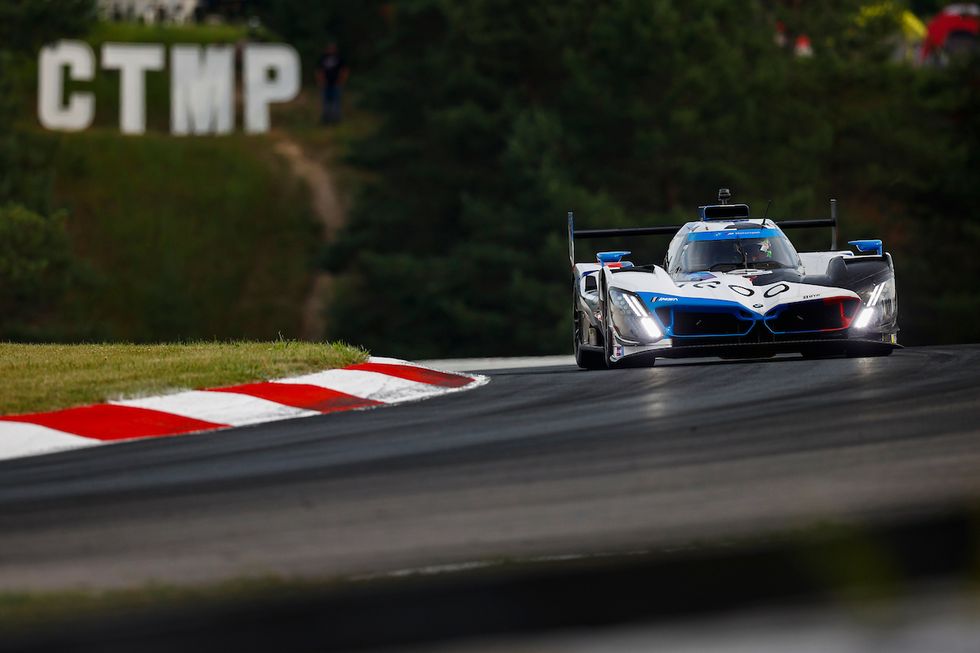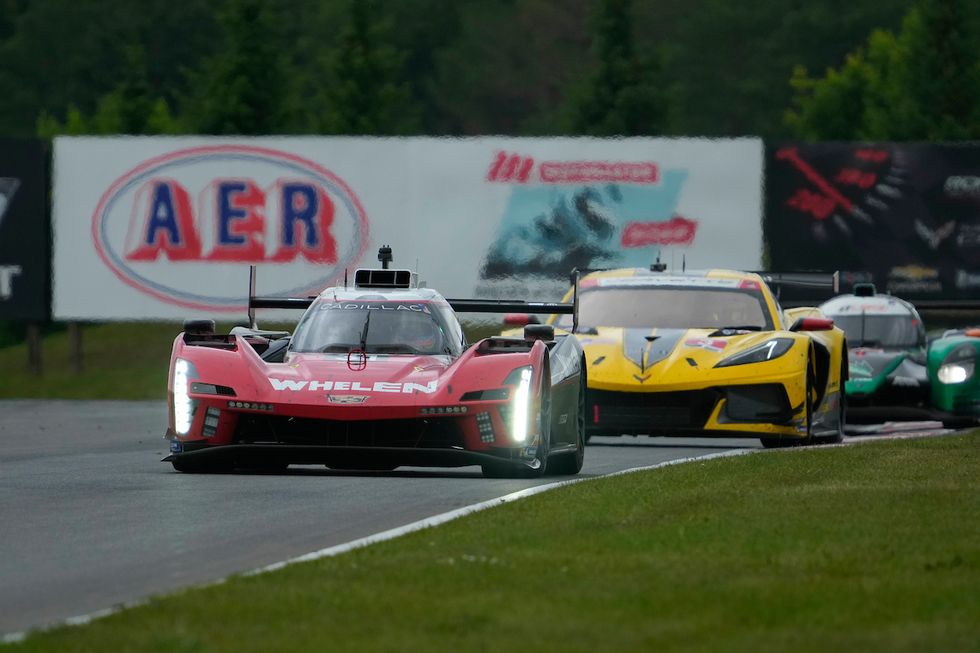- The races boil down to the sanctioning body having as much say about who wins and who loses on a race-by-race basis as competitors.
- Why not just change the BOP at midseason each year and let the teams otherwise control their own destiny?
- What is wrong with a competitive series where the GTP teams get a chance to show what they can do without middling adjustments in the form of BOP?
The Balance of Performance is the boom and bust of sports car racing.
In retrospect, it looked like the balance was upset at Le Mans by BOP and helped Ferrari beat Toyota. In the U.S., the BOP numbers change every race, so who knows if the behind-the-scenes decision makers at IMSA are getting it right.
At last weekend’s Canadian Tire Motorsports Park IMSA race, the two Acuras were dominant from start to finish. If the BOP works so well, what happened to the other three GTP manufacturers? Maybe IMSA got it wrong. Beyond obvious strategy choices, it is virtually impossible for any well-informed fan to conclude that the best car and team won without assuming IMSA got the BOP correct.
The BOP may be more of a problem for the old-school fans and is perhaps considered a necessary evil by the younger fans who have not known anything different in U.S. sports car endurance racing under the ownership and direction of the France family.
It is a complicated question because of the nature of the GTP hybrids and the new, sophisticated GT3 cars. (The LMP2 and LMP3 cars are virtually homogenous.)
Why not just change the BOP at midseason each year and let the teams otherwise control their own destiny?
The GTP cars are beautiful examples of technology that relate to the automotive marketplace. Due to their weight and full bodies, one could argue these prototypes and the Hypercars in the World Endurance Championship are the most complicated racing cars on any grid in the world—even with the shared common components used in the GTP hybrid drivetrains.
The racing, for the most part, has been competitive for the first six of nine races in GTP. But that’s because IMSA promises any participating manufacturer that no other manufacturer is going to get too far out front. That is exhibit A in the BOP discussion.
This form of “user insurance” for manufacturers reeks of behind-closed-doors discussions by teams jawboning over the BOP.
IMSA is already hosting big endurance events where a race happens to be in the middle. The fans, especially at the major endurance events, tend to watch ’em come and go, then wait until next year. Where are they when it comes to TV ratings and website numbers during the remainder of the schedule?
I would suggest a more open format—without BOP each race—would better align IMSA’s premier category with the formats of other major series and help generate more followers and fans.
According to the BOP business model, what drives sports car racing is manufacturer participation. But what about the fans? The American Le Mans Series, whose motto was “For the Fans,” invariably sold more tickets than the France family’s Grand-Am Series during the Great Schism from 1999 until 2012, despite lower car counts at the ALMS and a predictable struggle for anybody to beat the factory-backed Audi prototypes.
What was the secret sauce? Was it the fact the ALMS had both prototype and GT cars that also competed at Le Mans? Under this year’s convergence of rules, IMSA and officials at Le Mans have added a new page to the ALMS methodology by having prototypes racing in the U.S. eligible to compete at Le Mans. Bravo and brilliant.
What can IMSA do to continue to build its fan base beyond adding an endurance race at Indianapolis next season and convergence?
Fix the BOP problem.
Even with a generally observed convention among competitors not to talk about it, the fans know it’s there. The races boil down to the sanctioning body having as much say about who wins and who loses on a race-by-race basis as competitors.
Here’s a suggestion, made with an eye on keeping manufacturer participation at the now historically high levels. Announce in advance that the BOP will be changed at published intervals after the start of a season. Begin the season at the Rolex 24 at Daytona with the BOP established from pre-event testing and the Roar Before the Rolex 24. There is plenty of racing during IMSA’s longest and biggest race to help produce an adjusted and reliable BOP afterward.
Then let the manufacturers “have at it” until midway in the season. The worst-case scenario is one team and/or manufacturer wins four or five straight events before a BOP change. Given the vagaries of endurance racing and the baseline established by this year’s four participating manufacturers, that does not seem likely. But in the eyes of fans, it would boil down to better execution, if not a better car, winning.
One argument is that the weight adjustment to the GTP cars, which has ranged within a span of 35 pounds among the four manufacturers—does not make a significant difference in lap times. Those changes are coordinated with the rate of energy harvested by the hybrid system and the maximum level of energy allowed per stint. But if they do not make a significant difference, why make changes in the technical regulations prior to every event?
Looking for an edge, teams will test and spend money until they reach the maximum number of days. Given the talent level of teams and drivers, why not let them sort the options on suspension and aero set-ups, strategy and good ol’ fashioned wheelhouse magic over the course of several races?
The current race-by-race method smacks of manufacturer boosterism and mollycoddling. It reminds me of state governors giving away tax benefits to any company ready to build a factory after back room bargaining—whether the tax breaks are deserved or needed. What is wrong with a competitive series where the GTP teams get a chance to show what they can do without middling adjustments in the form of BOP?
As it is, GTP teams can use their software to change how the power is delivered by the internal combustion engines and the hybrid electrical system over the course of a lap to address “horses for courses.”
On the GTD side, several manufacturers have introduced new GT3 cars that are much improved in terms of the chassis platform, ease of pre-race preparation and weight distribution, which makes them easier to drive for the paying gentlemen customers. But a manufacturer should accept that a development curve for a new car may not result in a championship in the first season.
There’s always the sandbagging issue, where teams lag on their lap times on a quest for a better BOP before showing what they can really do, followed by howls of protests from others about the BOP. By now, IMSA should have enough of a handle on both the GTP and GTD entrants to hit the number right after Daytona and at midseason. It is OK with this writer to have a stiff fine for those who bellyache to the media about other teams sandbagging or the BOP if they get beat.
That’s also known as whining.
Read the full article here




